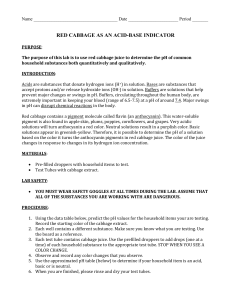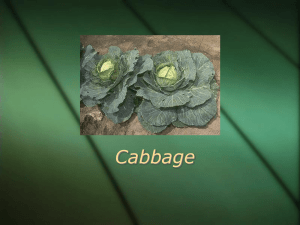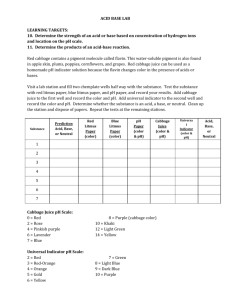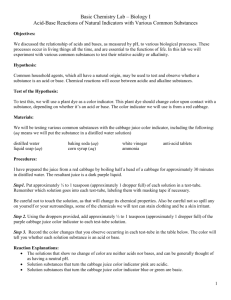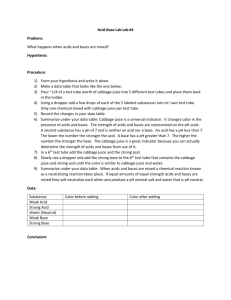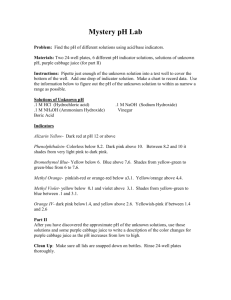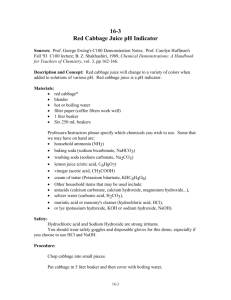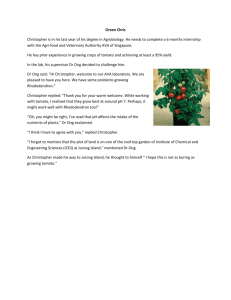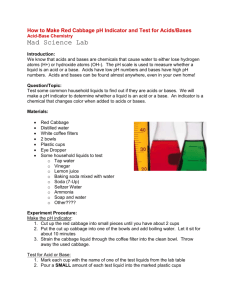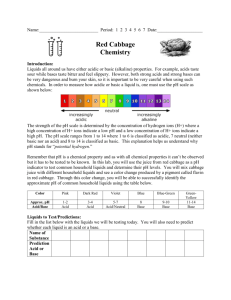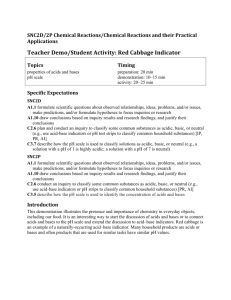CABBAGE CHEMISTRY (CC
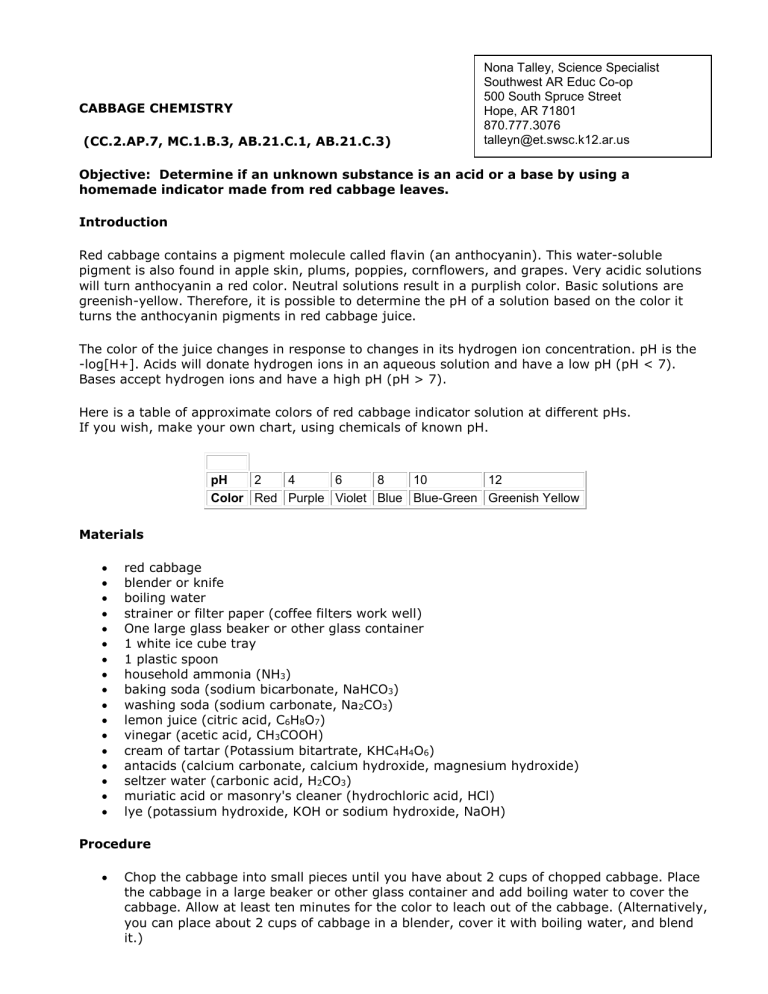
CABBAGE CHEMISTRY
(CC.2.AP.7, MC.1.B.3, AB.21.C.1, AB.21.C.3)
Nona Talley, Science Specialist
Southwest AR Educ Co-op
500 South Spruce Street
Hope, AR 71801
870.777.3076 talleyn@et.swsc.k12.ar.us
Objective: Determine if an unknown substance is an acid or a base by using a homemade indicator made from red cabbage leaves.
Introduction
Red cabbage contains a pigment molecule called flavin (an anthocyanin). This water-soluble pigment is also found in apple skin, plums, poppies, cornflowers, and grapes. Very acidic solutions will turn anthocyanin a red color. Neutral solutions result in a purplish color. Basic solutions are greenish-yellow. Therefore, it is possible to determine the pH of a solution based on the color it turns the anthocyanin pigments in red cabbage juice.
The color of the juice changes in response to changes in its hydrogen ion concentration. pH is the
-log[H+]. Acids will donate hydrogen ions in an aqueous solution and have a low pH (pH < 7).
Bases accept hydrogen ions and have a high pH (pH > 7).
Here is a table of approximate colors of red cabbage indicator solution at different pHs.
If you wish, make your own chart, using chemicals of known pH.
pH 2 4 6 8 10 12
Color Red Purple Violet Blue Blue-Green Greenish Yellow
Materials
red cabbage
blender or knife
boiling water
strainer or filter paper (coffee filters work well)
One large glass beaker or other glass container
1 white ice cube tray
1 plastic spoon
household ammonia (NH
3
)
baking soda (sodium bicarbonate, NaHCO
3 washing soda (sodium carbonate, Na lemon juice (citric acid, C
6
H
8
O
7
)
2
CO
3
vinegar (acetic acid, CH
3
COOH)
cream of tartar (Potassium bitartrate, KHC
)
)
antacids (calcium carbonate, calcium hydroxide, magnesium hydroxide)
seltzer water (carbonic acid, H
2
CO
3
)
4
H
4
O
6
)
muriatic acid or masonry's cleaner (hydrochloric acid, HCl)
lye (potassium hydroxide, KOH or sodium hydroxide, NaOH)
Procedure
Chop the cabbage into small pieces until you have about 2 cups of chopped cabbage. Place the cabbage in a large beaker or other glass container and add boiling water to cover the cabbage. Allow at least ten minutes for the color to leach out of the cabbage. (Alternatively, you can place about 2 cups of cabbage in a blender, cover it with boiling water, and blend it.)
Filter out the plant material to obtain a red-purple-bluish colored liquid. This liquid is at about pH 7. (The exact color you get depends on the pH of the water.)
Add a spoonful of your red cabbage indicator into each well of the ice tray.
Add various household solutions to your indicator until a color change is obtained. Use separate wells for each household solution - you don't want to mix chemicals that don't go well together! Record your findings in the data table.
Notes
This demo uses acids and bases, so please make certain to use safety goggles and gloves, particularly when handling strong acids (HCl) and strong bases (NaOH or KOH).
Chemicals used in this demo may be safely washed down the drain with water.
A neutralization experiment could be performed using cabbage juice indicator. First add an acidic solution such as vinegar or lemon juice until a reddish color is obtained. Then add baking soda or antacids to return the pH towards a neutral 7.
You can make your own pH paper strips using red cabbage indicator. Take filter paper (or coffee filter) and soak it in a concentrated red cabbage juice solution. After a few hours, remove the paper and allow it to dry (hang it by a clothespin or string). Cut the filter into strips and use them to test the pH of various solutions.
Test
Spot
1.
2.
3.
Substance Tested Color Change Acid or Base?
4.
5.
6.
7.
8.
9.
10.
11.
12.
Think about it:
A bush called the hydrangea has flowers that contain anthocyanin. A single plant may produce flowers that are pink, purple, or blue, depending on environmental conditions.
Hypothesize what conditions may produce pink flowers.
_____________________________________________________________________
_____________________________________________________________________
_____________________________________________________________________
_____________________________________________________________________
(modified version) http://chemistry.about.com/library/weekly/aa012803a.htm

